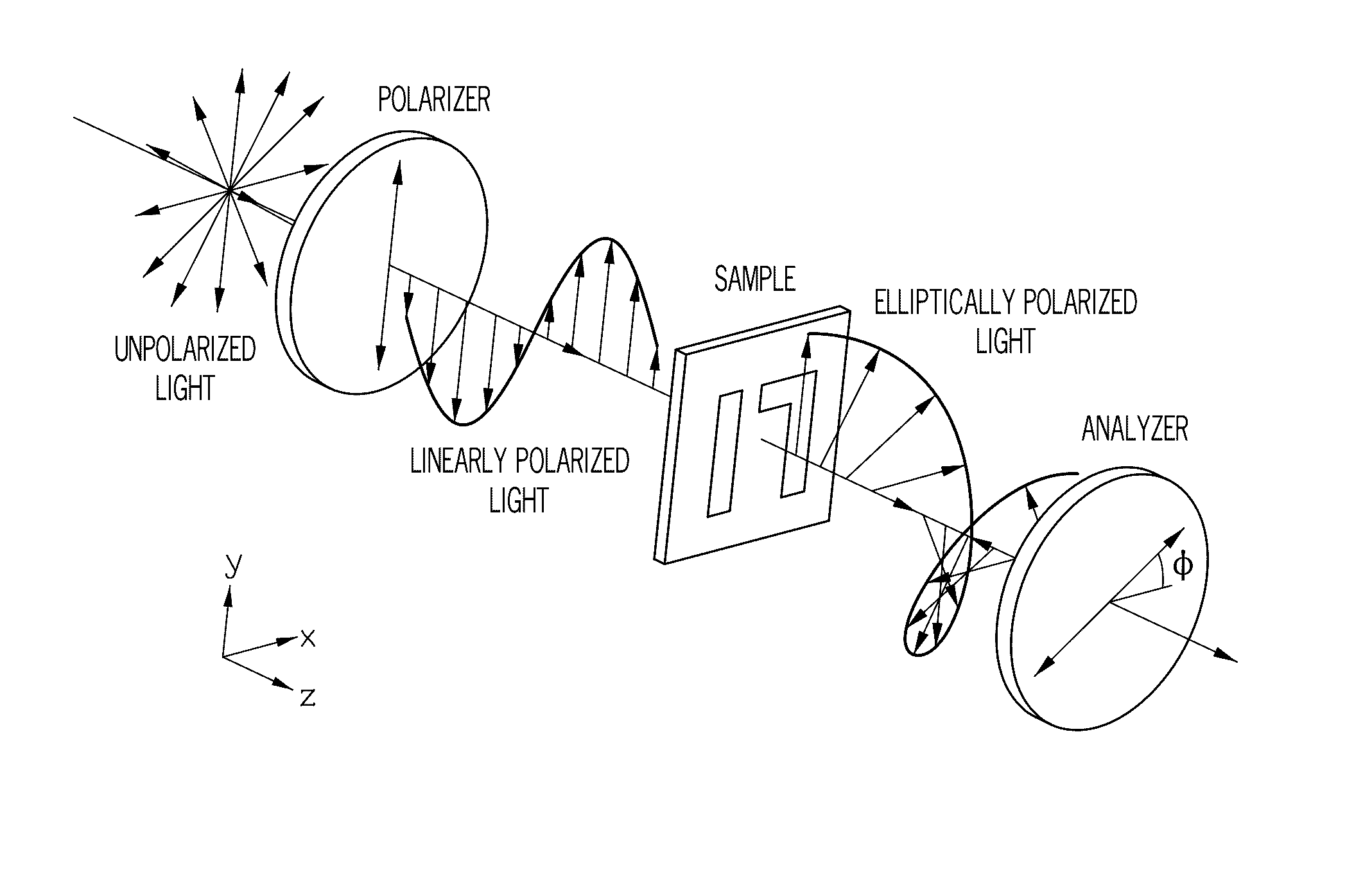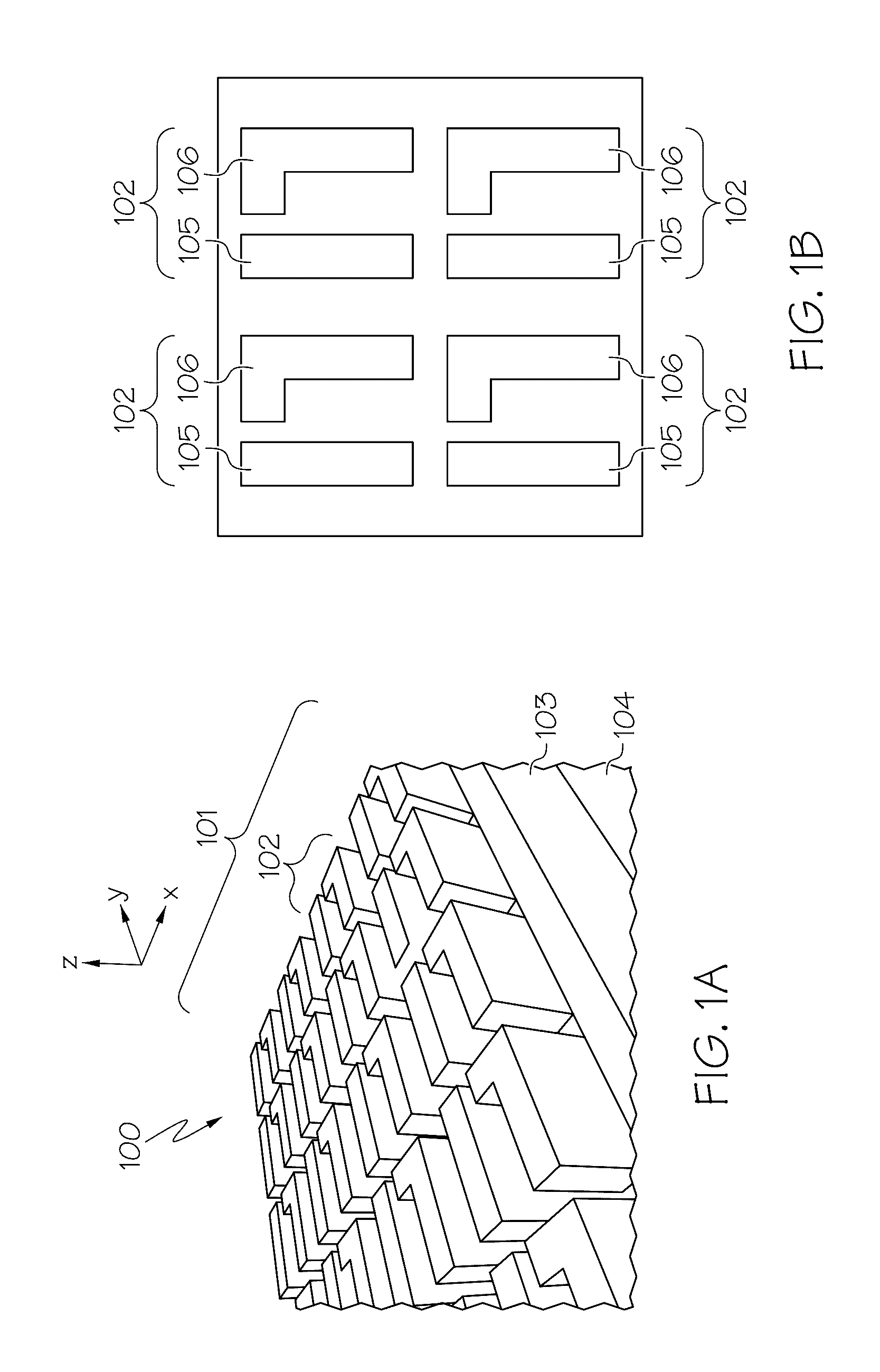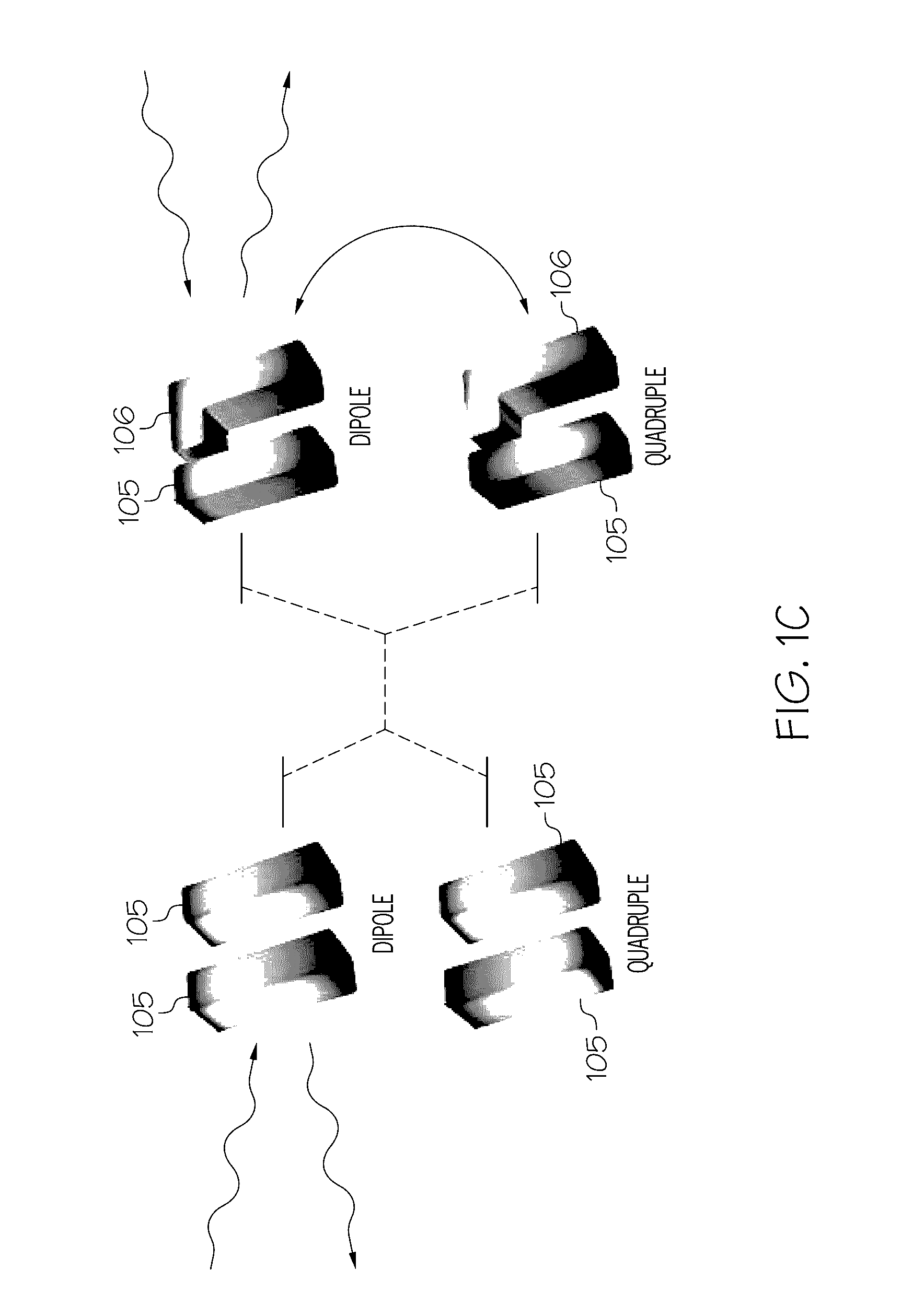Tag with a non-metallic metasurface that converts incident light into elliptically or circularly polarized light regardless of polarization state of the incident light
a non-metallic, incident light technology, applied in the field of metasurfaces, can solve the problems of poor far-field coupling of isolated high-micro-cavities suggested for biochemical sensing applications, considerable challenge in meeting these requirements, and poor coupling efficiency
- Summary
- Abstract
- Description
- Claims
- Application Information
AI Technical Summary
Benefits of technology
Problems solved by technology
Method used
Image
Examples
Embodiment Construction
[0027]The principles of the present invention allow an experimental realization of silicon-based infrared metasurfaces supporting Fano resonances with record-high quality factors Q>100. In addition, as discussed herein, the principles of the present invention experimentally demonstrate that high (>50%) linear-to-circular polarization conversion efficiency can be accomplished by making these silicon-based metasurfaces planar (2D) chiral by design. The supporting numerical simulations indicate that such metasurfaces can exhibit an extraordinary degree of planar chirality, thus opening exciting possibilities for developing narrow-band thermal emitters of circularly polarized radiation. In one embodiment, Si-based metasurfaces are fabricated from standard commercially available silicon-in-insulator (SOI) wafers using standard CMOS-compatible semiconductor fabrication techniques, making them even more appealing for practical applications.
[0028]Referring now to the Figures in detail, FIG....
PUM
 Login to View More
Login to View More Abstract
Description
Claims
Application Information
 Login to View More
Login to View More - R&D
- Intellectual Property
- Life Sciences
- Materials
- Tech Scout
- Unparalleled Data Quality
- Higher Quality Content
- 60% Fewer Hallucinations
Browse by: Latest US Patents, China's latest patents, Technical Efficacy Thesaurus, Application Domain, Technology Topic, Popular Technical Reports.
© 2025 PatSnap. All rights reserved.Legal|Privacy policy|Modern Slavery Act Transparency Statement|Sitemap|About US| Contact US: help@patsnap.com



